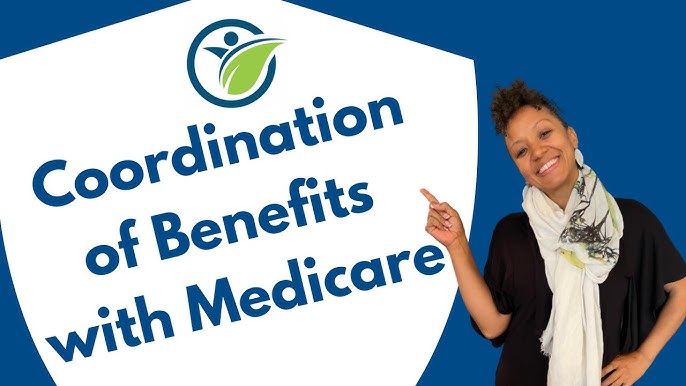Medicaid Coordination of Benefits
Understanding Medicaid Coordination of Benefits
Medicaid coordination of benefits is a crucial aspect of the healthcare system that ensures individuals receive the appropriate coverage and avoid unnecessary expenses. When a person is eligible for Medicaid, they may also have other health insurance coverage, such as through an employer or a private insurer. In such cases, coordination of benefits allows Medicaid to work in tandem with these other insurance plans to provide comprehensive coverage.
Why is Medicaid Coordination of Benefits Important?
The coordination of benefits is essential to prevent duplicate payments and ensure that the right insurance plan takes primary responsibility for providing coverage. By coordinating benefits, Medicaid can avoid paying for services that are already covered by another insurance plan. This process helps save costs and ensures that individuals receive the maximum benefits entitled to them.
How Does Medicaid Coordination of Benefits Work?
Medicaid coordination of benefits involves a series of steps to determine the primary and secondary insurance plans for an individual. Here’s a simplified overview of the process:
Step 1: Identification of Primary and Secondary Plans
The first step is to identify the primary insurance plan. This is usually the plan that has the primary responsibility for providing coverage. Medicaid is considered the payer of last resort, meaning it steps in to cover costs only when no other insurance plan is available or when the primary plan has already paid its maximum benefits.
Step 2: Coordination of Benefits
Once the primary insurance plan is identified, Medicaid coordinates with that plan to determine the extent of coverage. Medicaid may cover services that are not covered by the primary plan or provide additional coverage for services that exceed the primary plan’s limits.
Step 3: Claims Processing
When a healthcare service is rendered, the provider submits a claim to the primary insurance plan first. After the primary plan processes the claim and pays its share, any remaining balance may be submitted to Medicaid for consideration.
Step 4: Payment Determination
Medicaid reviews the claim and determines the amount it will pay based on its fee schedule and policies. The payment made by Medicaid is typically the difference between the total cost of the service and the amount paid by the primary plan.
Benefits of Medicaid Coordination of Benefits
Coordinating benefits between Medicaid and other insurance plans offers several advantages:
Cost Savings: By preventing duplicate payments, coordination of benefits helps save costs for both individuals and the healthcare system.
Enhanced Coverage: Medicaid may provide coverage for services that are not covered by the primary insurance plan, ensuring individuals receive comprehensive care.
Reduced Administrative Burden: The coordination process streamlines claims processing, reducing administrative burden for both providers and individuals.

Medicaid coordination of benefits is a vital component of the healthcare system, ensuring individuals receive the maximum coverage entitled to them while avoiding duplicate payments. By coordinating benefits with other insurance plans, Medicaid enhances coverage, reduces costs, and simplifies the claims process. Understanding the process of coordination of benefits can help individuals make informed decisions about their healthcare coverage.
Frequently Asked Questions – Medicaid Coordination of Benefits
1. What is Medicaid Coordination of Benefits?
Medicaid Coordination of Benefits is a process where Medicaid works with other insurance providers to determine the primary payer for healthcare services.
2. Why is Medicaid Coordination of Benefits important?
Medicaid Coordination of Benefits is important to ensure that Medicaid is the payer of last resort, meaning other insurance coverage should be utilized first to reduce costs.
3. How does Medicaid coordinate benefits with other insurance providers?
Medicaid coordinates benefits by gathering information about other insurance coverage from individuals and their families, and then working with those insurance providers to determine the order of payment.
4. What happens if Medicaid is the secondary payer?
If Medicaid is the secondary payer, it will cover the remaining costs after the primary insurance has paid its share.
5. Can Medicaid coordination of benefits apply to both children and adults?
Yes, Medicaid coordination of benefits applies to both children and adults who are eligible for Medicaid and have other insurance coverage.
6. Are there any eligibility requirements for Medicaid coordination of benefits?
Yes, individuals must meet the eligibility requirements for Medicaid and have other insurance coverage to participate in Medicaid coordination of benefits.
7. Can Medicaid coordination of benefits be retroactive?
Yes, in some cases, Medicaid coordination of benefits can be retroactive, meaning it can apply to healthcare services received before the coordination process takes place.
8. How can I provide information about my other insurance coverage to Medicaid?
You can provide information about your other insurance coverage to Medicaid by contacting your Medicaid office or caseworker and providing the necessary details.
9. Will Medicaid coordination of benefits affect my other insurance coverage?
No, Medicaid coordination of benefits should not affect your other insurance coverage. It is simply a process to determine the primary payer for healthcare services.
10. What should I do if I have questions or concerns about Medicaid coordination of benefits?
If you have questions or concerns about Medicaid coordination of benefits, you should reach out to your Medicaid office or caseworker for assistance and clarification.




